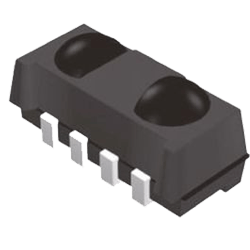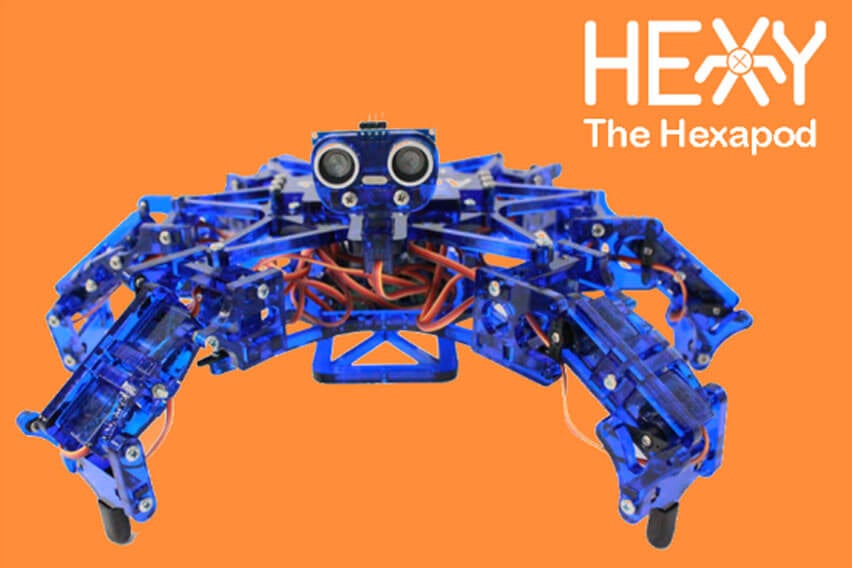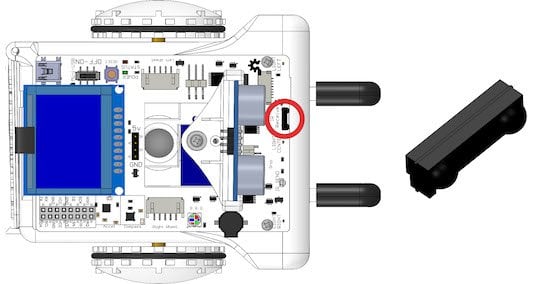
Sparki has one infrared remote receiver that can receive commands by rapidly blinking infrared lights, like those with Sparki’s remote, or TV remotes.
How It Works
Infrared remotes work by sending codes via flashing lights. These lights flash really fast; Sparki’s remote flashes 38,000 times a second. By measuring the amount of time between each flashing, Sparki can tell if each burst is meant to be a 1 or a 0, known as bits:
Sparki counts these flashes until 32bits have been counted, then turns this into a number. Specifically, Sparki uses the NEC infrared code protocol.
Using the Part
With the basic Sparki code in place, you can measure an infrared sensor by using this command:
sparki.readIR();
This command returns the last code that was sent to Sparki. It returns this number in the form of an integer. If there has not been a code sent since the last time Sparki ran this command, it will send back a -1.
SparkiDuino already has code examples for you to use:
File > Examples > Remote
/*******************************************
IR Remote
Sparki has a sensor that lets it receives
commands from the included remote control.
Try moving it around!
********************************************/
#include <Sparki.h> // include the sparki library
void setup()
{
sparki.clearLCD();
}
// /------^-----
// | |
// | 69 70 71 |
// | 68 64 67 |
// | 7 21 9 |
// | 22 25 13 |
// | 12 24 94 |
// | 8 28 90 |
// | 66 82 74 |
// ____________/
void loop()
{
int code = sparki.readIR();
if(code != -1){
sparki.print("Received code: ");
sparki.println(code);
}
switch(code){
// Movement buttons
case 70: sparki.moveForward(); break;
case 21: sparki.moveBackward(); break;
case 67:
case 71: sparki.moveRight(); break;
case 69:
case 68: sparki.moveLeft(); break;
case 64: sparki.moveStop();
sparki.gripperStop();
break;
// Gripper Buttons
case 9: sparki.gripperOpen(); break;
case 7: sparki.gripperClose(); break;
// buzzer
case 74: sparki.beep(); break;
// Servo Buttons
case 90: sparki.servo(SERVO_LEFT); break;
case 28: sparki.servo(SERVO_CENTER); break;
case 8: sparki.servo(SERVO_RIGHT); break;
// RGB LED
case 25: sparki.RGB(RGB_OFF); break;
case 12: sparki.RGB(RGB_RED); break;
case 24: sparki.RGB(RGB_GREEN); break;
case 94: sparki.RGB(RGB_BLUE); break;
default:
break;
}
sparki.updateLCD();
}
Finally, you can try more complex programs using this receiver, such as Sparki’s Default Program.












